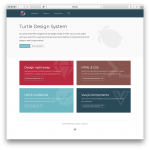OTRS 7 Sneak Peek I – A new design strategy
Marc Bonsels16. May 2018 | User Experience
Disclaimer:
The practical examples presented in our technical blog (blog.otrs.com) and now in the expert category in our FAQ blog section serve as a source of ideas and documentation to show what is theoretically possible with OTRS in concrete scenarios or sometimes even for more exotic configurations. All configurations presented here were developed under laboratory conditions as a proof of concept.
We can only guarantee testing and implementation of these concepts to be error-free and productive if implemented in a workshop with one of our OTRS consultants. Without this, the responsibility lies with the customer himself. Please note that configurations from older OTRS versions may not work in the newer ones.
When we started doing research on how to rebuild the entire user experience of the OTRS customer interface, we very soon recognized that it wouldn’t be enough to just put a new design on the existing structures. More than that, it wouldn’t even be enough to just create a one-time big bang to make everything new. Instead, we learned that we need to create a whole new user experience design strategy. In the history of OTRS, there was only one major GUI redesign which came with OTRS 3. When we did this, we didn’t think too much about how to evolve the design from then on or how developers would work with it when creating new features within OTRS.
It wouldn’t be enough to just put a new design on the existing structures.
With the new design of the OTRS 7 customer interface (which will then be the “external interface”, combining both public and non-public interface into one), we’re going to implement a design process. This process is meant to make sure that we’re not only creating a one-time redesign, but know how we can proceed from there. Whenever we’re in the need of creating new features/screens/components within OTRS, this process will come into play. It consists of 5 basic elements:
- Understand: Understand the context in which the feature/product is used.
- Specify: Specify the requirements.
- Solve: Develop solutions which fulfill those requirements.
- Listen: Collect user feedback for the solutions.
- Iterate: begin with the first step again to improve the solution.
All future design decisions will be driven and backed up by this process. It will be supported by a library of design elements (which we call “design system”), so the process will not only be applied to the redesign of the GUI as a whole, but also to the creation and evolution of each single GUI component. This OTRS Design System will be the leading resource for OTRS designers and developers.
In this series of articles called Sneak Peek we would like to give you some insights of the development of OTRS 7. We will shed some light on technical aspects as well as how we’re planning to change the user experience. Got more questions? Please contact us!

Robert Ullrich at 07.08.2018, 06:02
Hi George, as written yesterday in the facebook group. OTRS 7 will be released at the end of the year for our service contract customers. The OTRS 7 Community Edition will be released in ~ 3 years. Cheers Robert
George Muddu at 04.08.2018, 12:36
Will OTRS 7 be available for the community version and when is the expected release date of OTRS 7
Marc Bonsels at 12.06.2018, 12:56
The design system is currently still in development. We'll keep you posted on this on the blog.
xhoy at 12.06.2018, 08:29
And where can we find this new design system? Any docs?